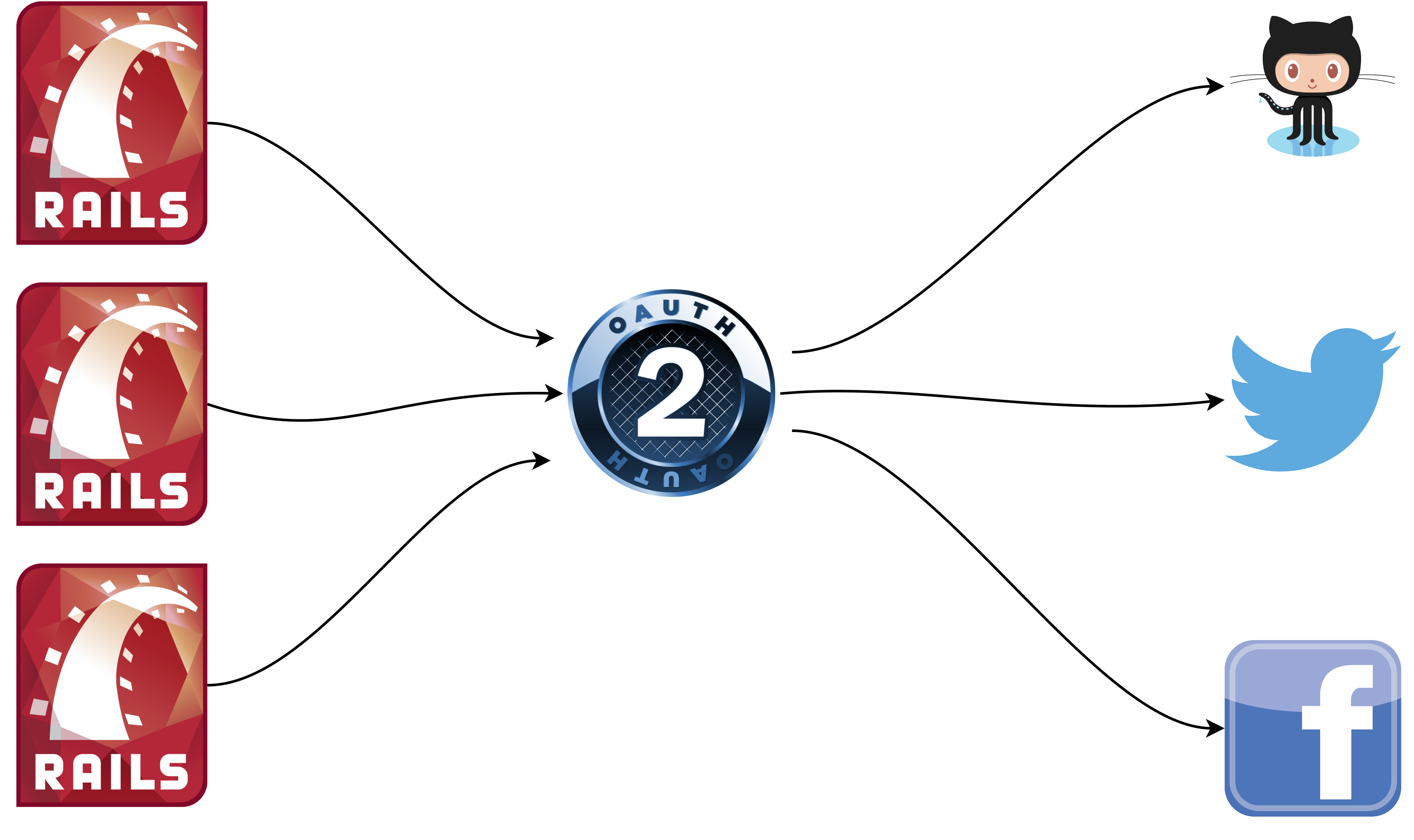Service Oriented Authentication
SO Auth!
Wow
Very Architecture
Service Oriented Authentication
Service Oriented Authentication
Stumbling towards SOA
The story of CloudHDR
My original app

Now a collection of services
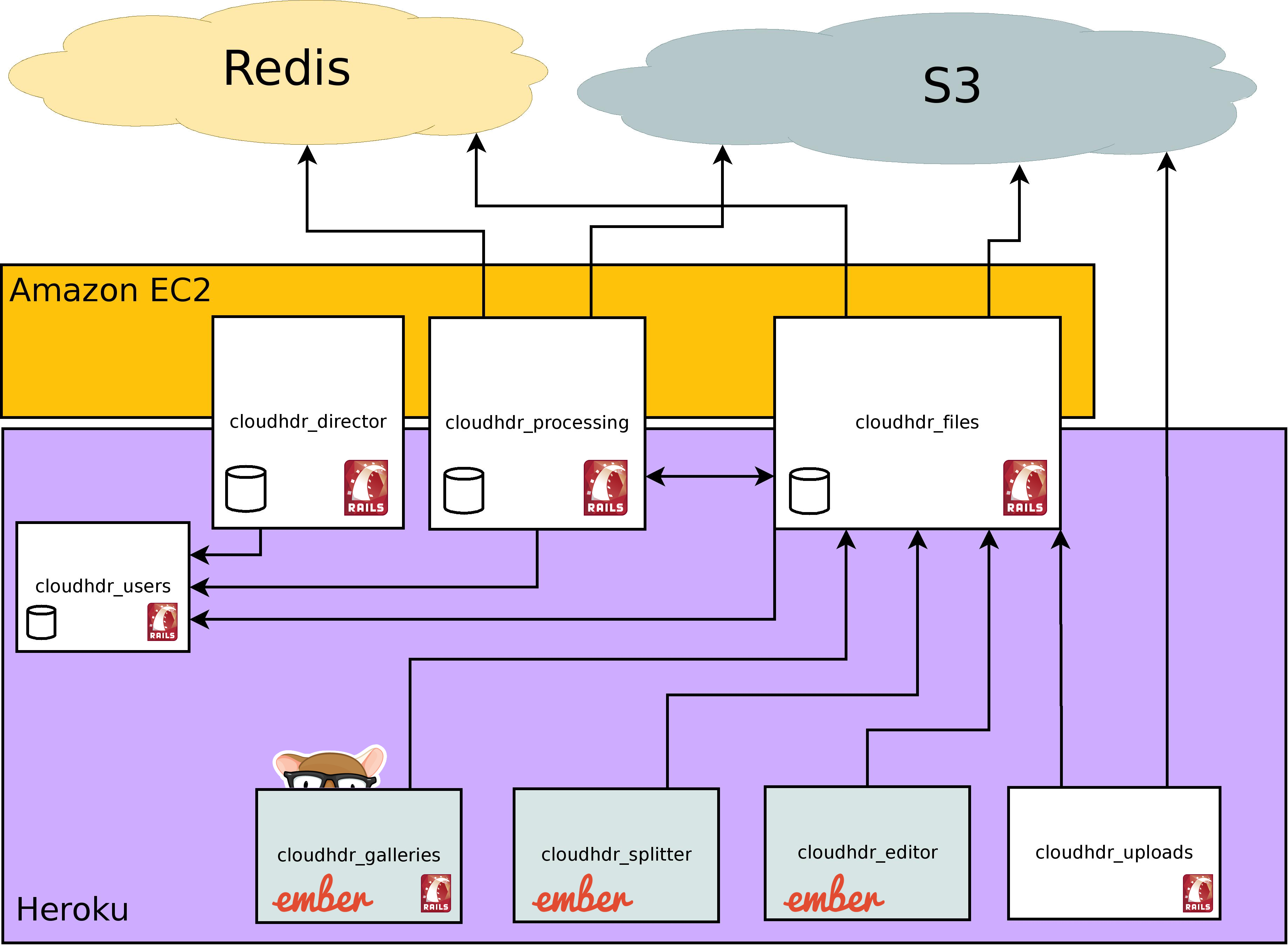
OAuth2

An open standard for delegated authorization
What if I can't split
everything up at once?

Start where you are
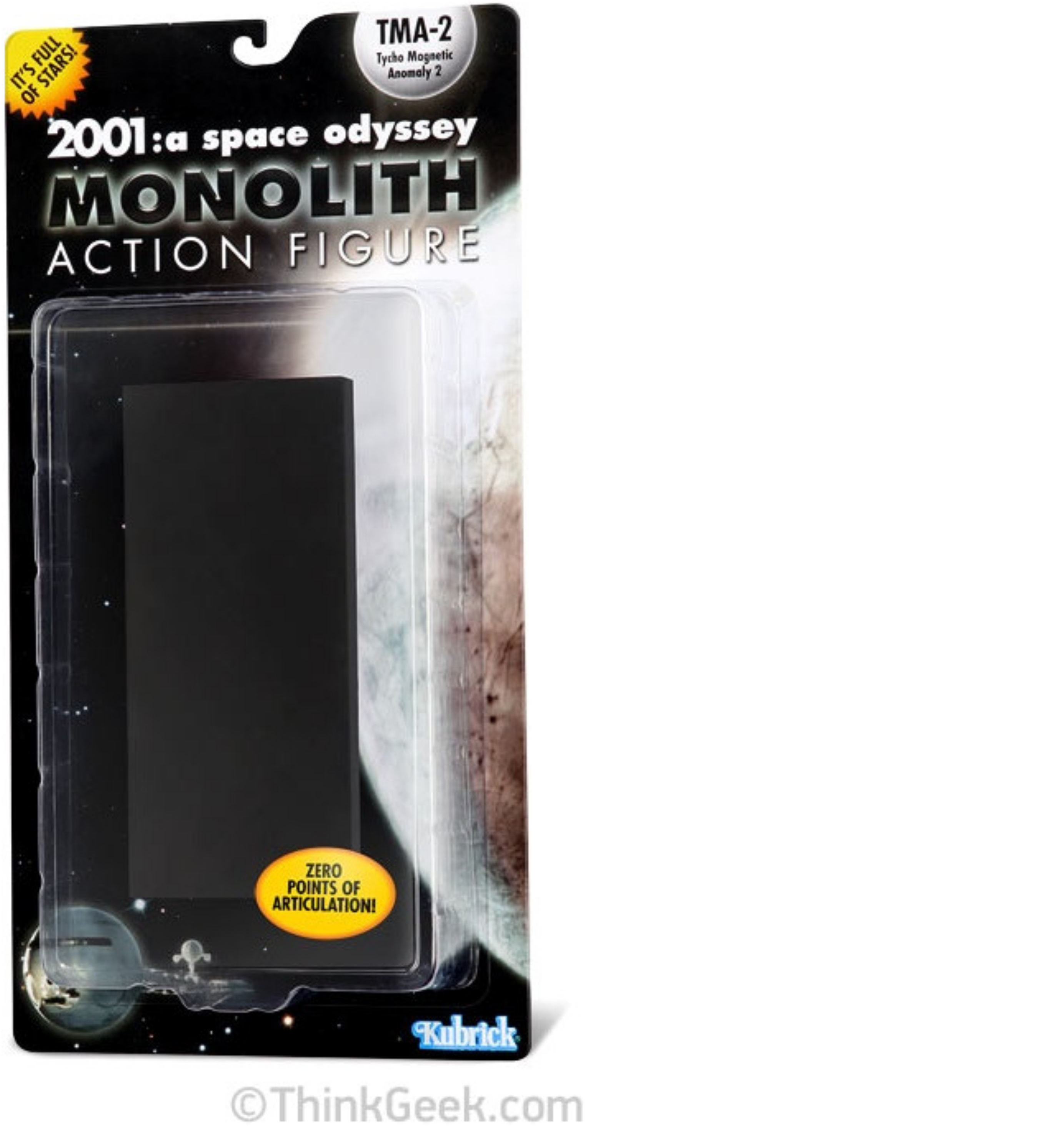
Add an OAuth provider
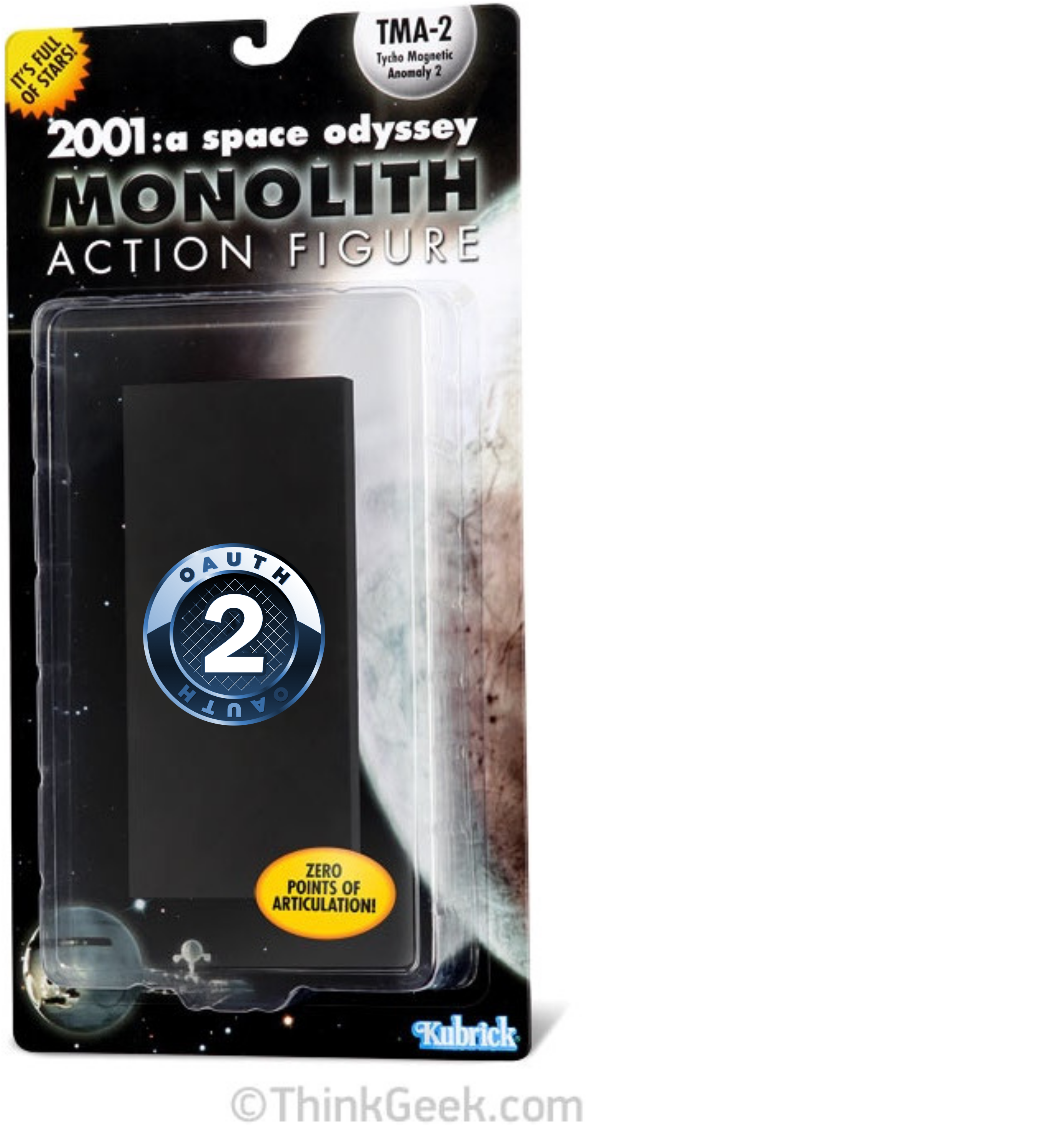
Add one service

SOA, FTW!
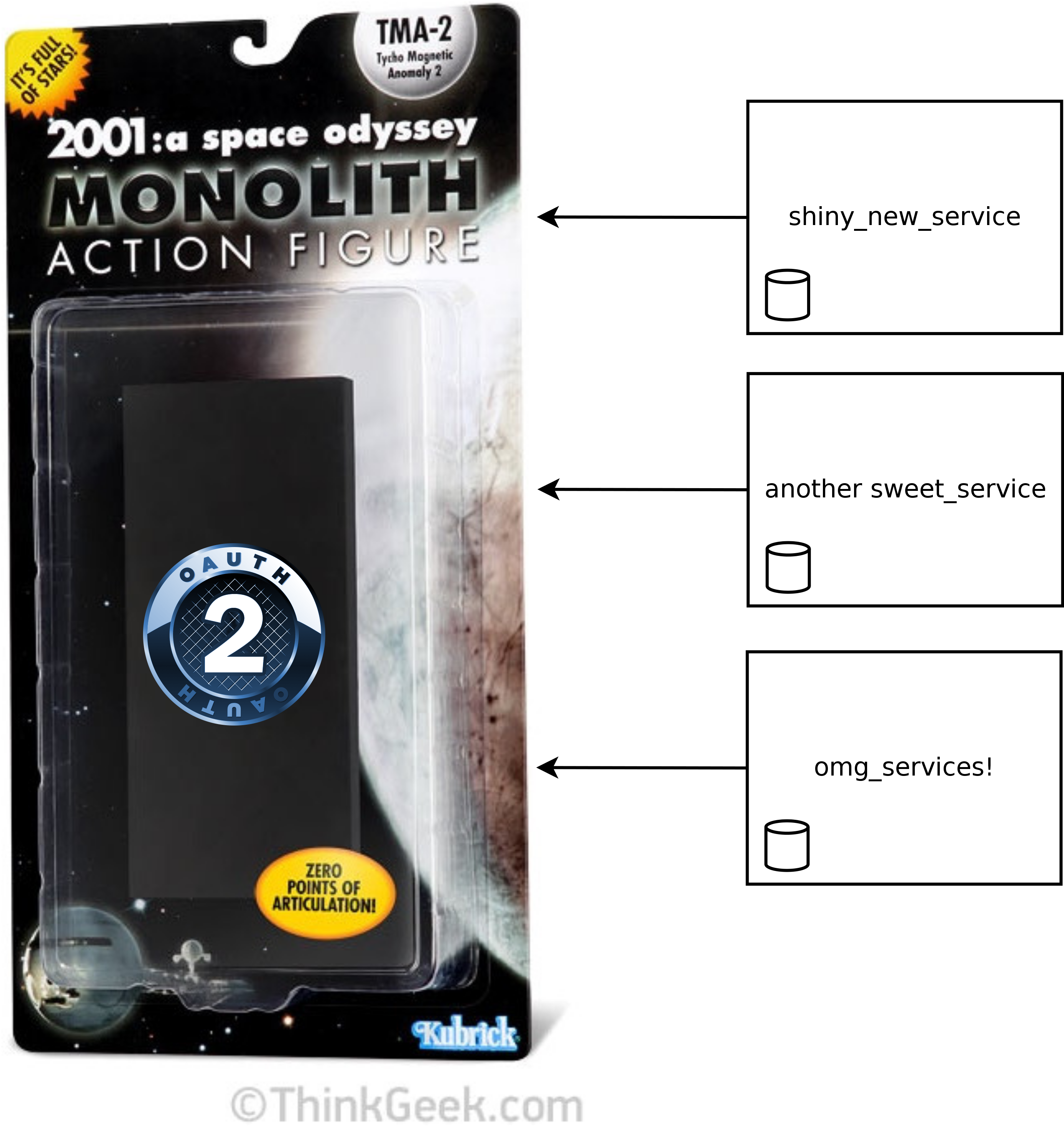
Introducing the Mc-SOA*

Monolith Centric
Service Oriented Architecture
*Not affiliated with McDonalds Corp in any way.
Outline
- Context, Goals & Requirements
- Introduction to SOAuth
- Implementation
A bit about me |
|
Jeremy Greendrummer, coder, entrepreneur, photographer, brewerorganizer of OkcRuby.org |
|

|
@jagthedrummer jeremy@octolabs.com http://www.octolabs.com/ |
CloudHDR
HDR Photo Processing Automation
You don't want this:


You want this!
Links
All in one
Repos
https://github.com/jagthedrummer/so_auth_provider
https://github.com/jagthedrummer/so_auth
https://github.com/jagthedrummer/so_auth_client
Demos
Goals & Reqs
Goals & Reqs
- Small focused apps
- Single sign on/off
- Minimize code duplication
- Support a variety of app/service types
OAuth2
OAuth2



A Brief Intro to OAuth2
Or Maybe it's Review
Just a web client

GET /protected
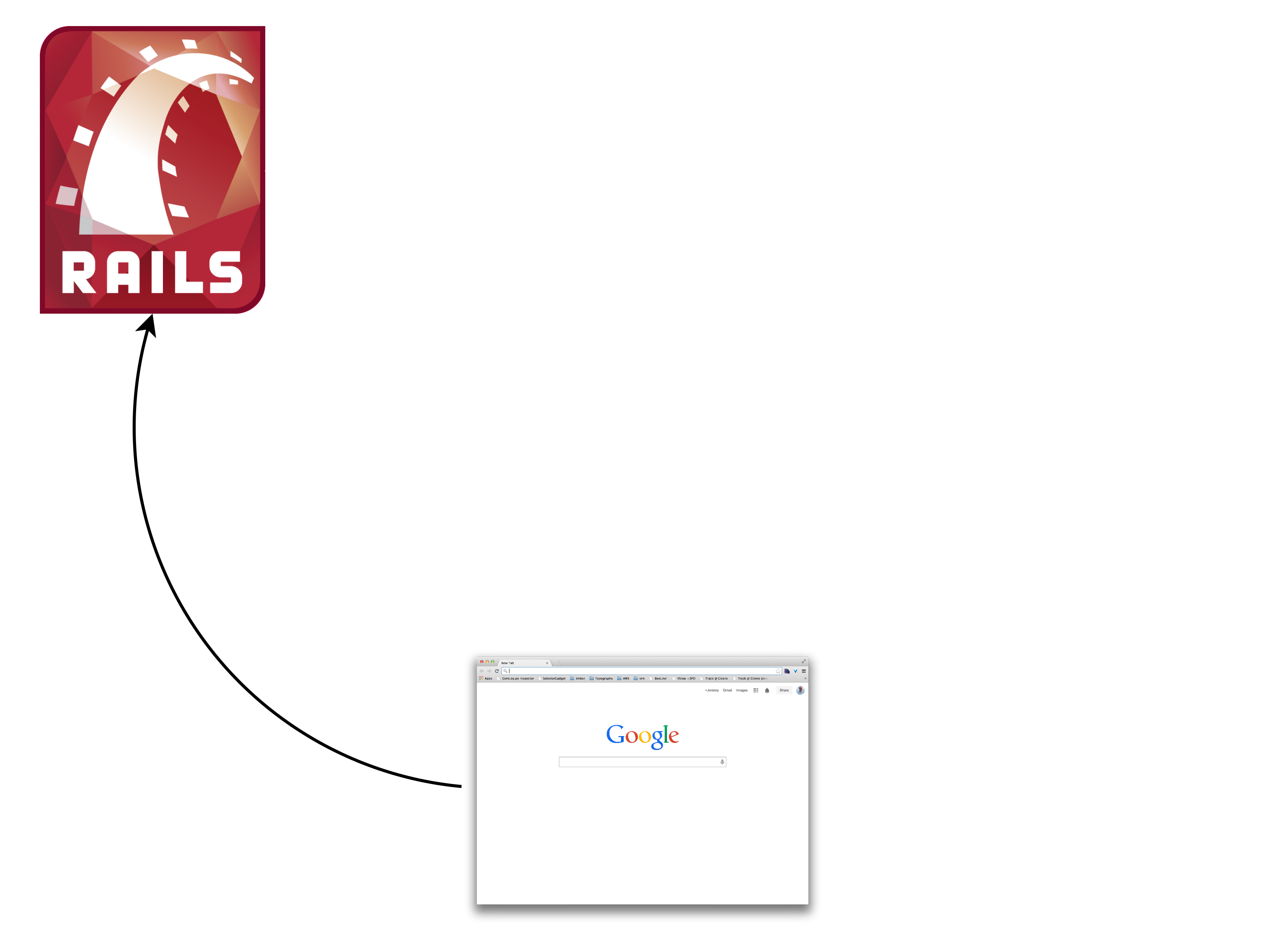
Redirect #{provider}/authorize?client_id=123&state=yyz&response_type=code
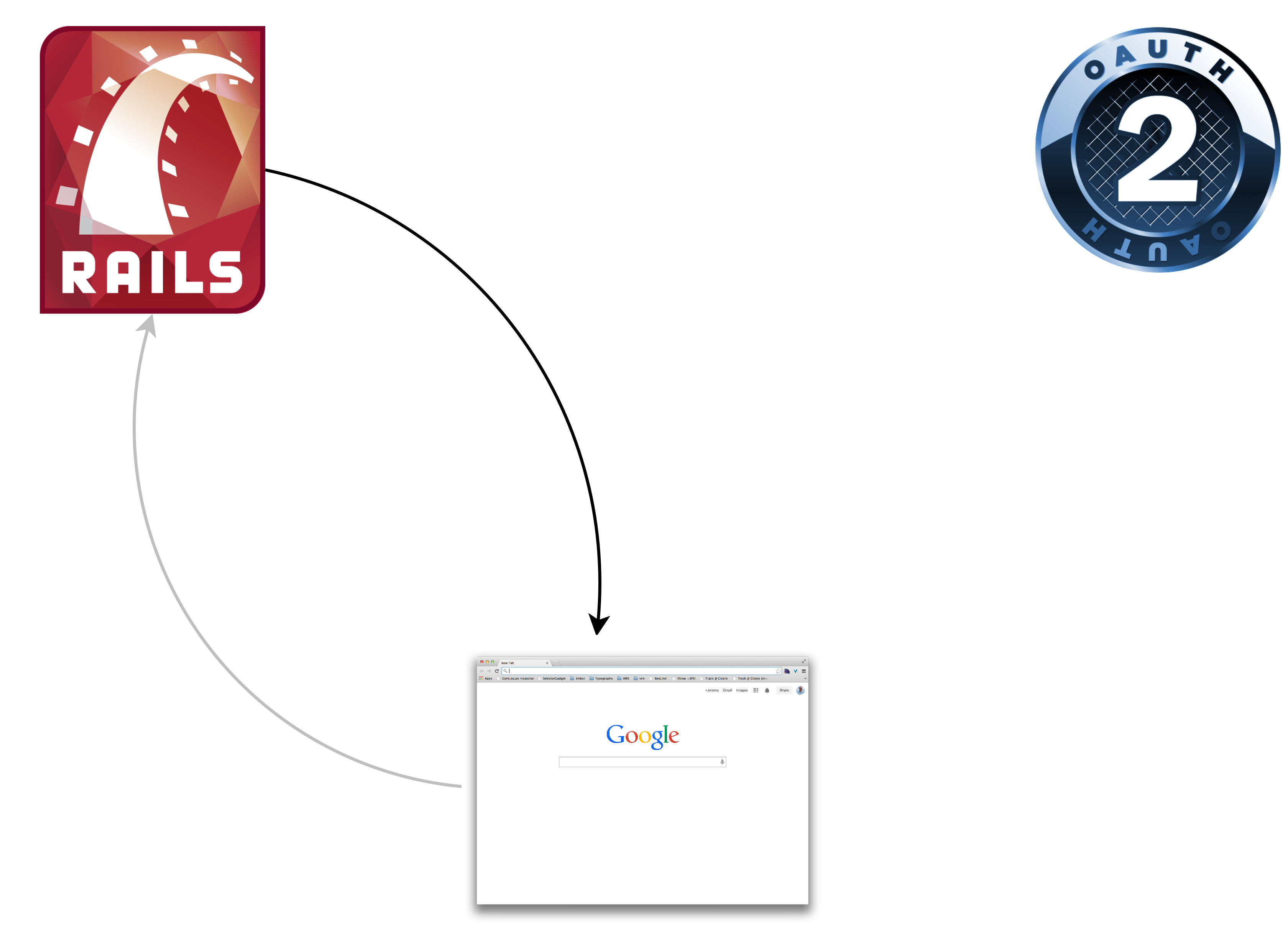
GET #{provider}/authorize?client_id=123&state=yyz&response_type=code
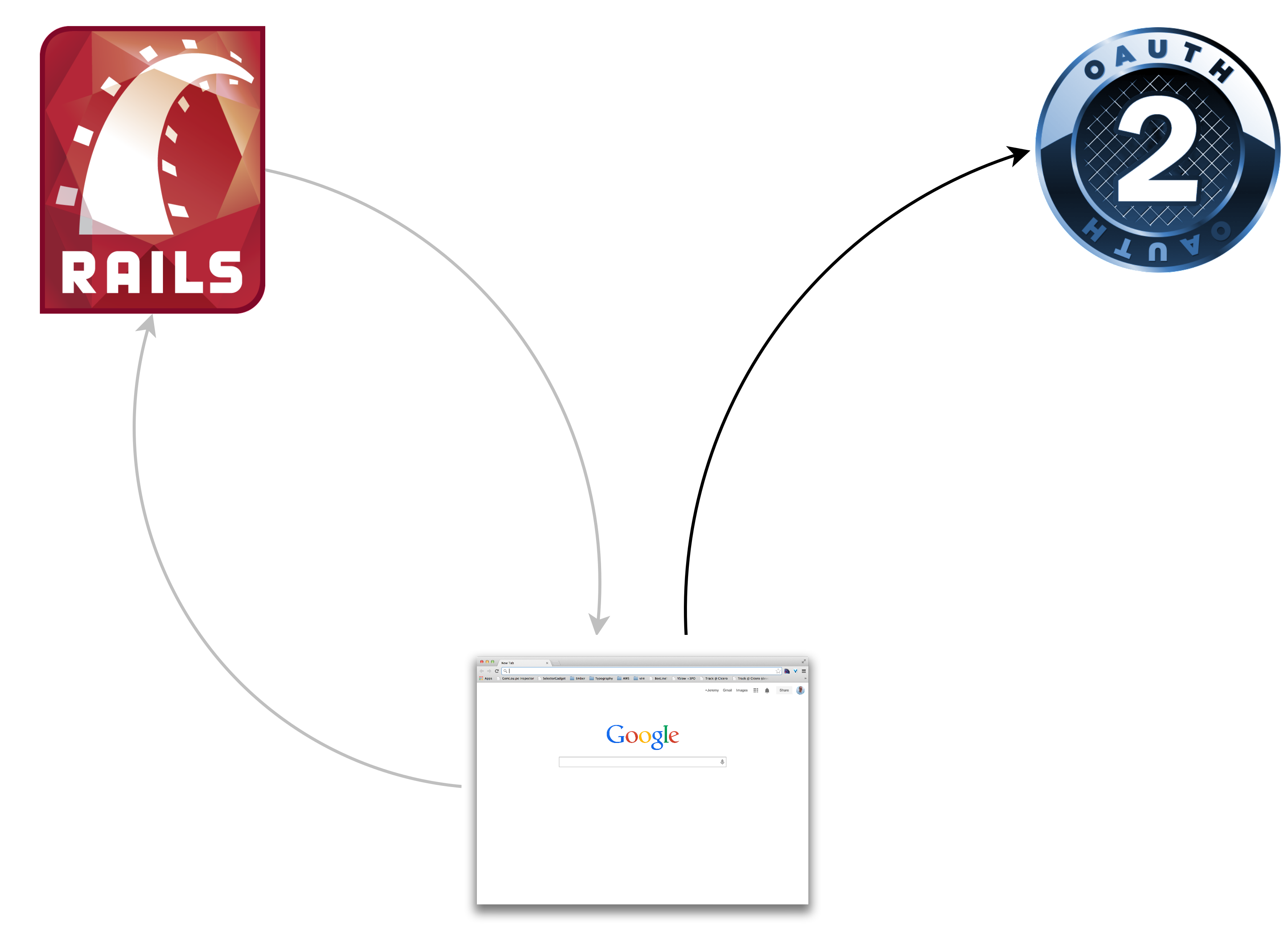
Redirect #{consumer}/callback
?code=abc&state=yyz&response_type=code
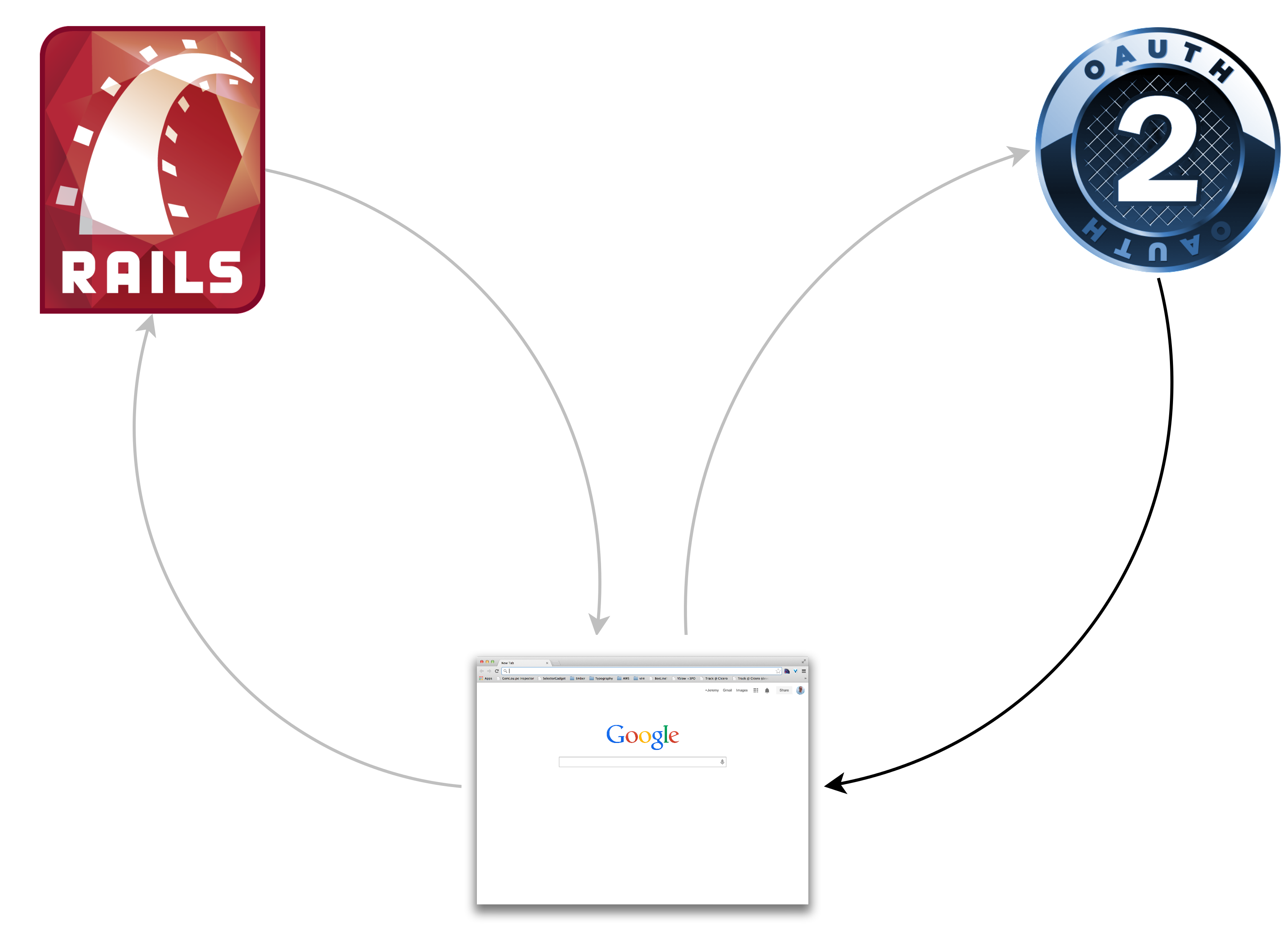
GET #{consumer}/callback
?code=abc&state=yyz&response_type=code
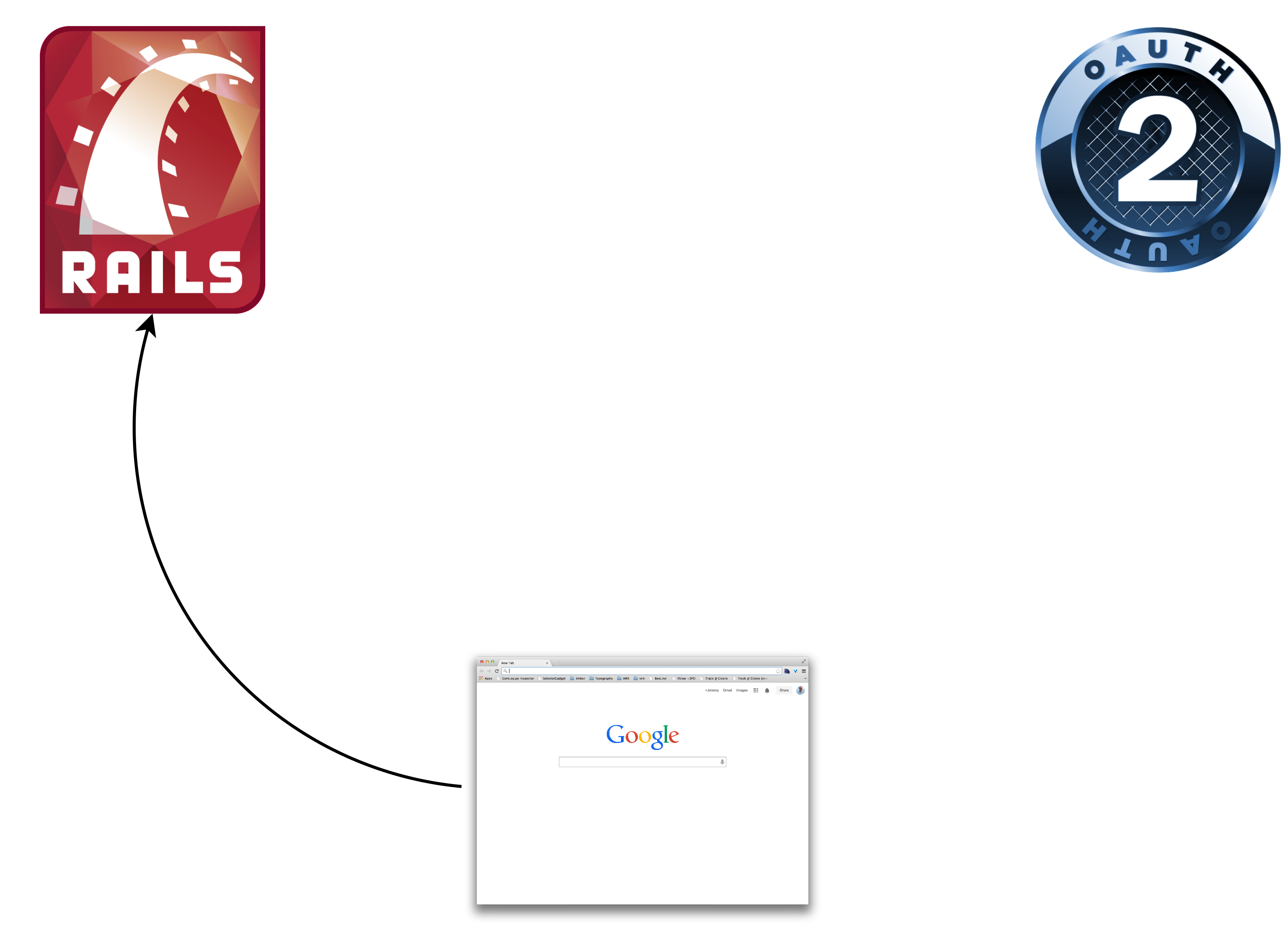
POST /oauth/token?
client_id=123&client_secret=456&code=abc
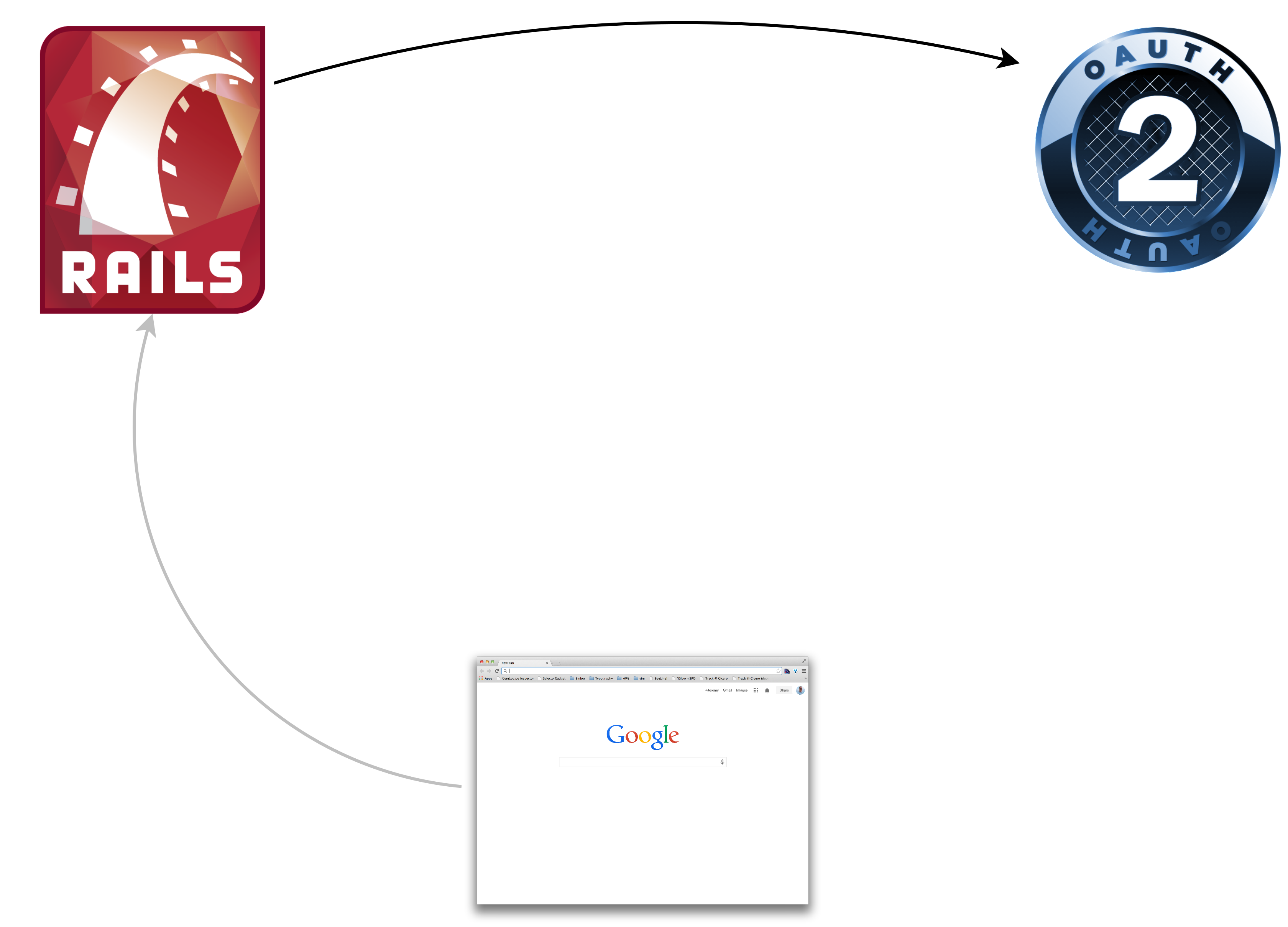
{token:'42ab', refresh_token:'9876', uid:'jag'}
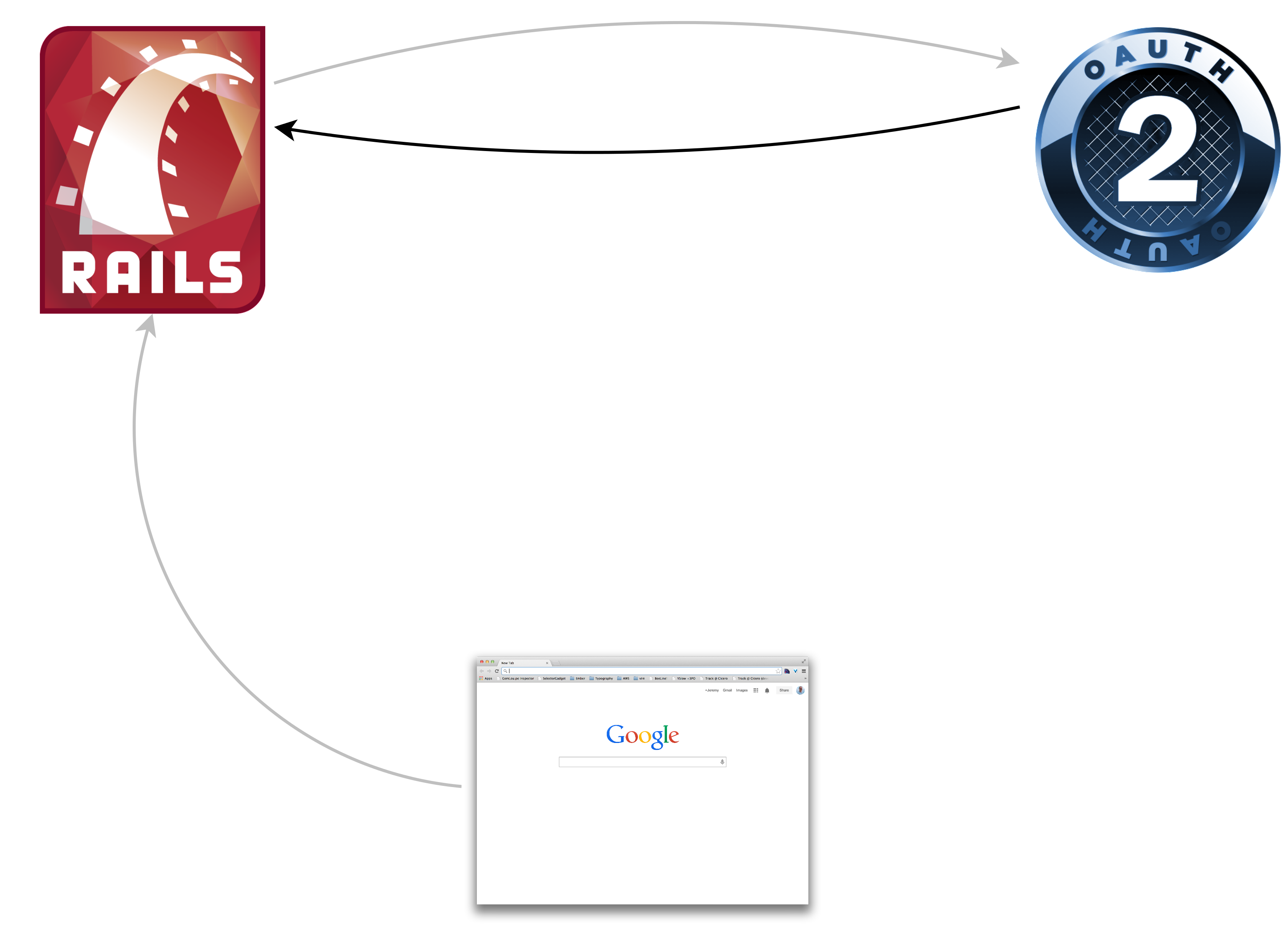
GET /me.json?token=42ab
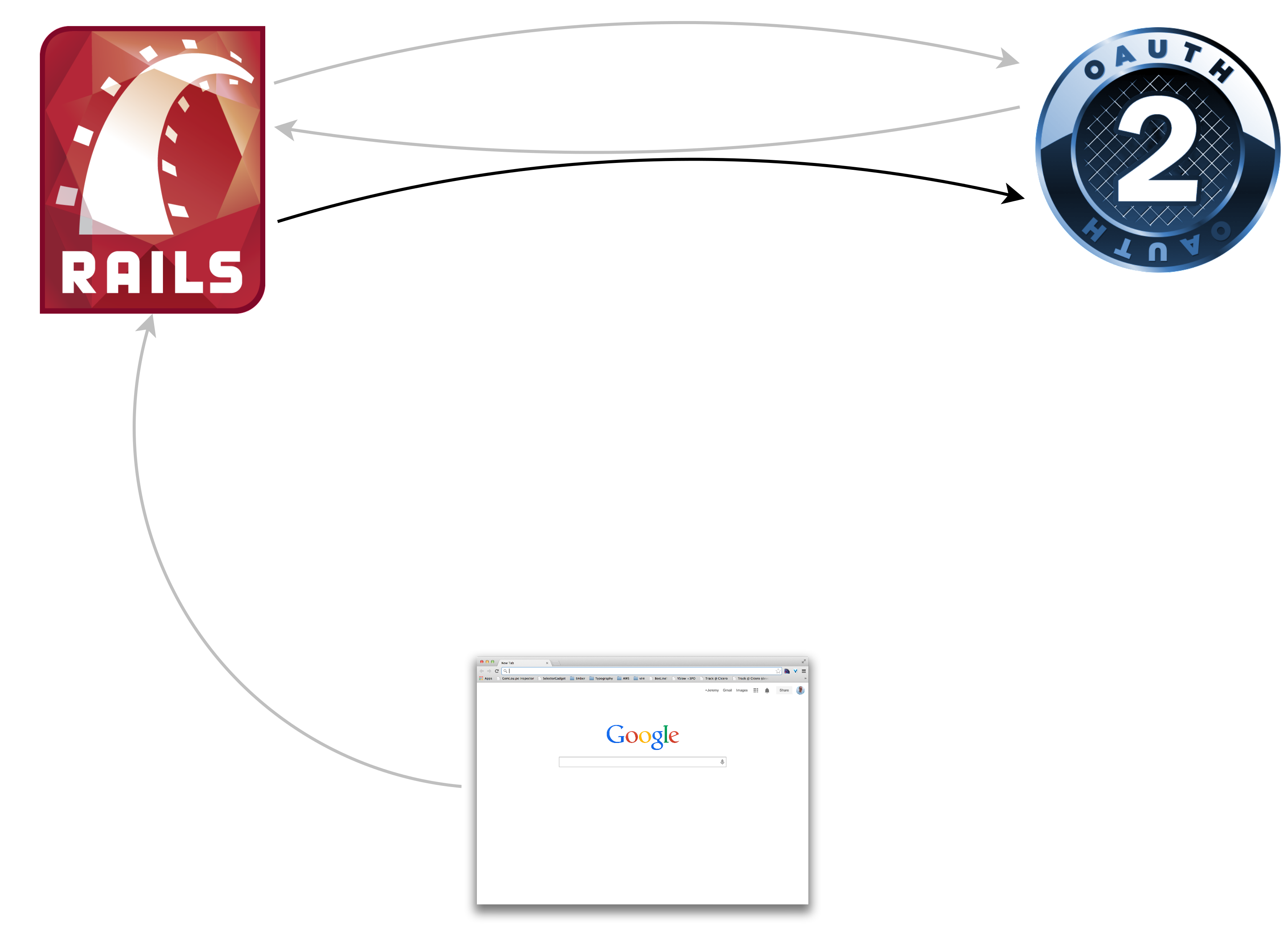
{id:111, name:"Jeremy Green",
email:"jeremy@octolabs.com"}
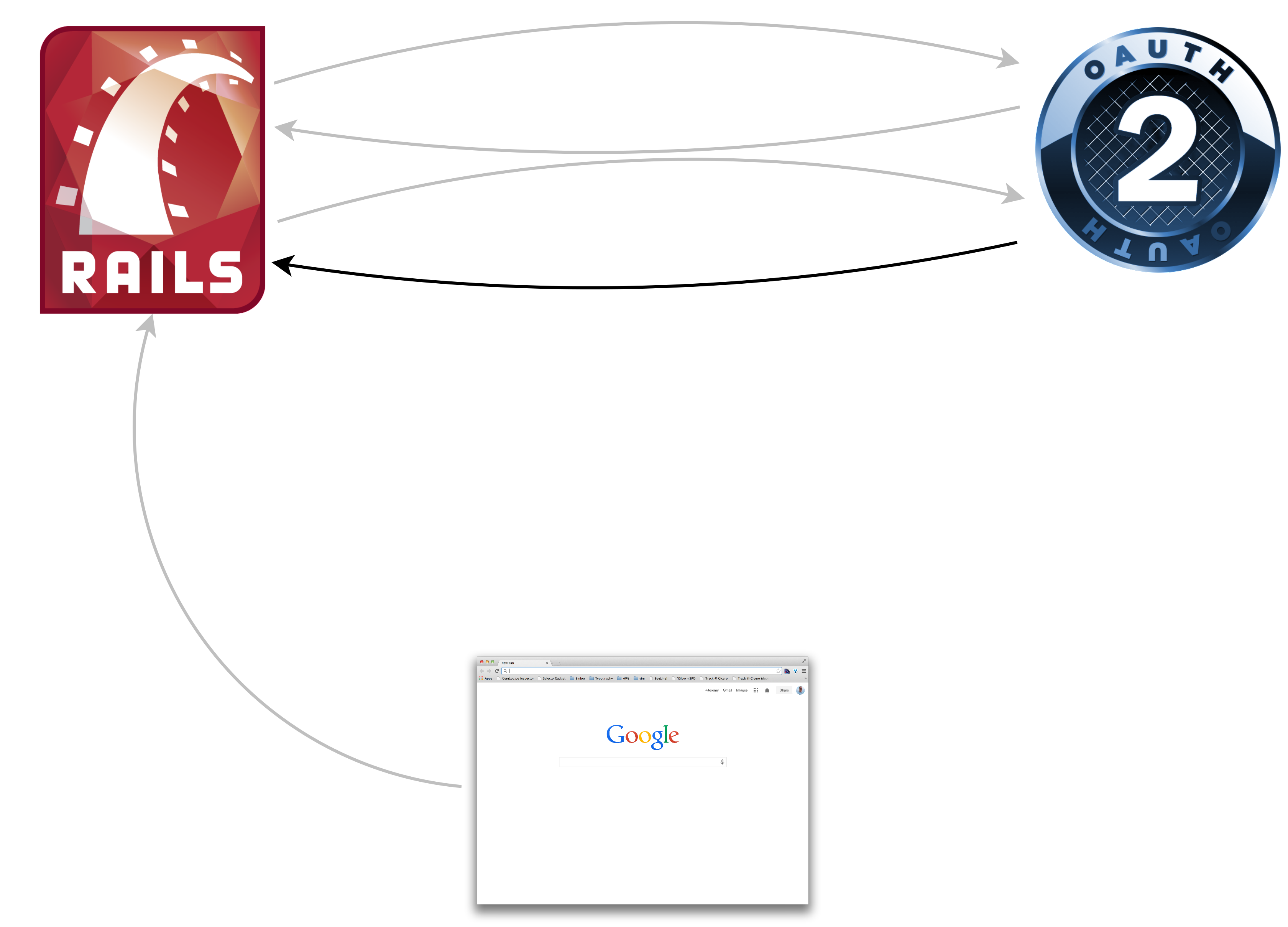
Redirect /protected
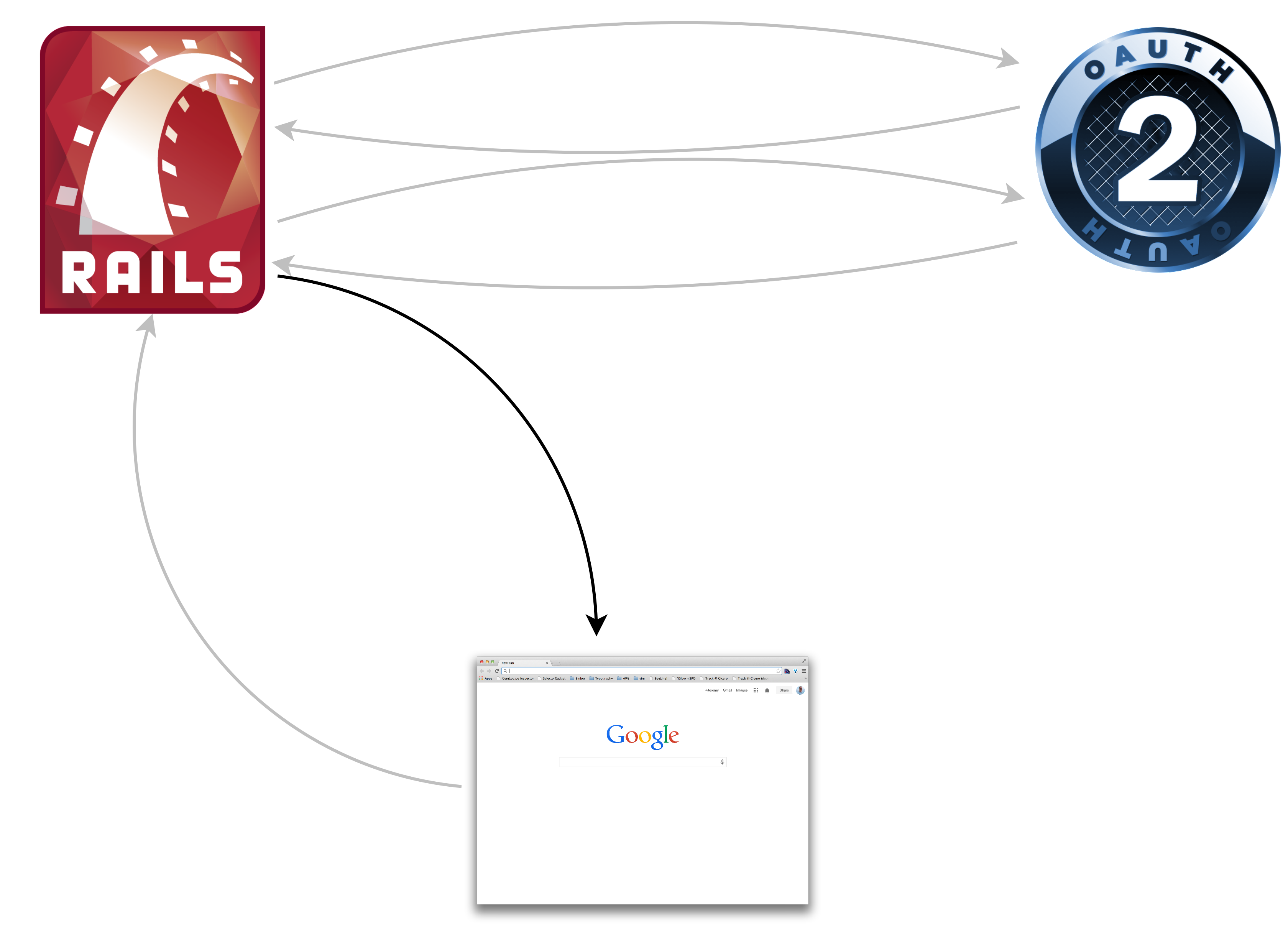
GET /protected

200 OK /protected
Whew!

Seven request/response pairs

Seven!!
RubyGems.org to the rescue!
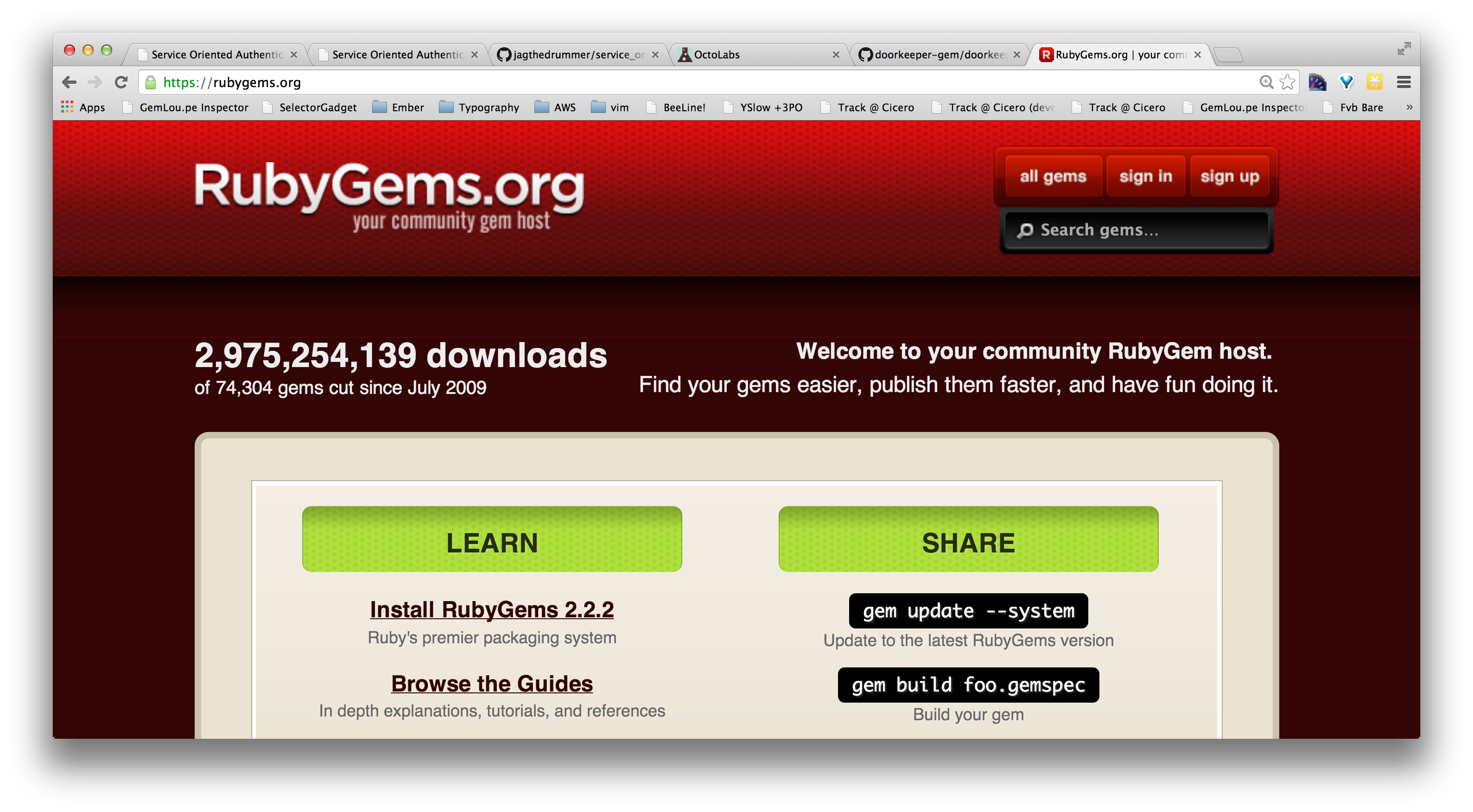
Provider Implementation
doorkeeper-gem/doorkeeper

Consumer Implementation
intridea/omniauth
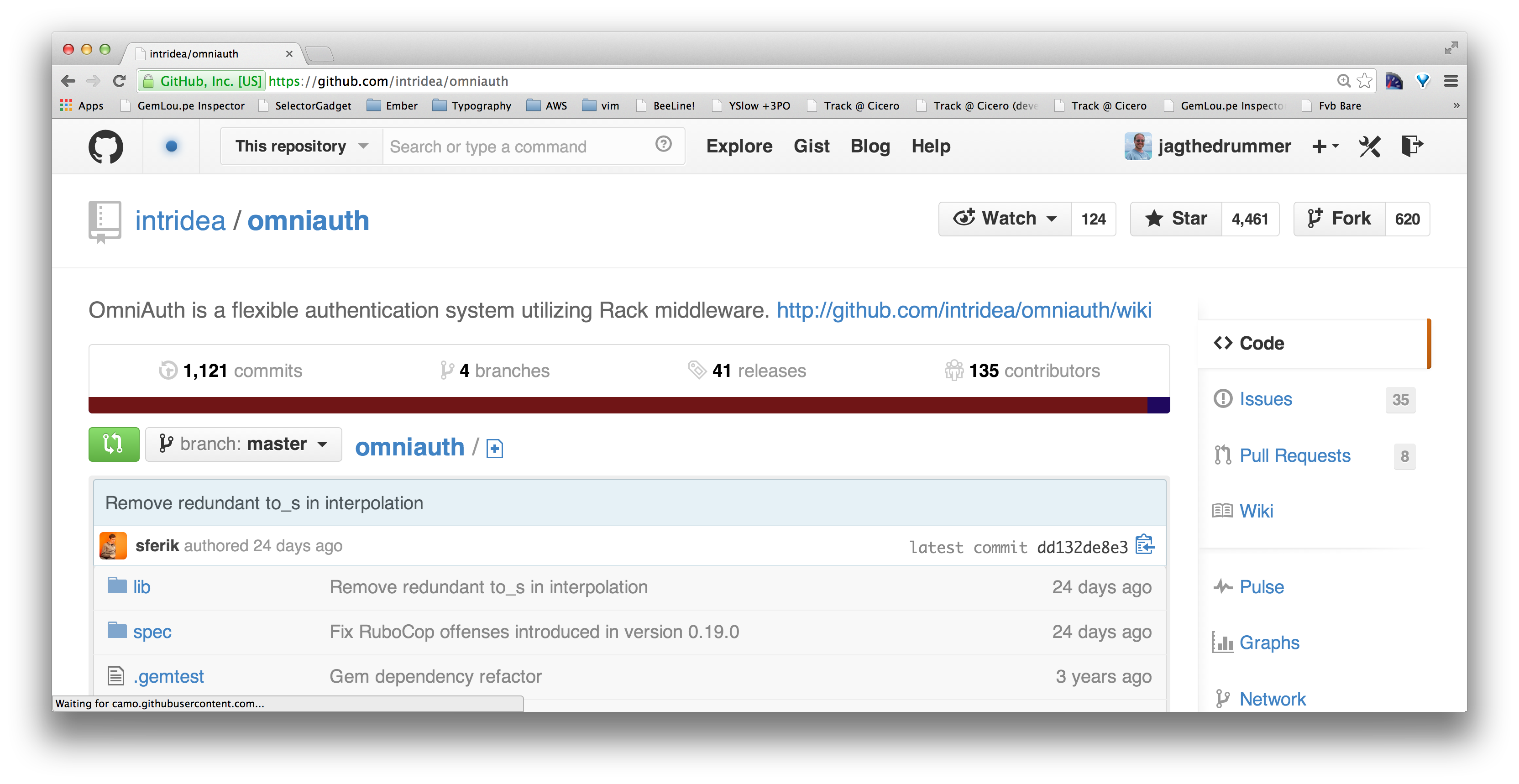
The plan
The plan

The plan
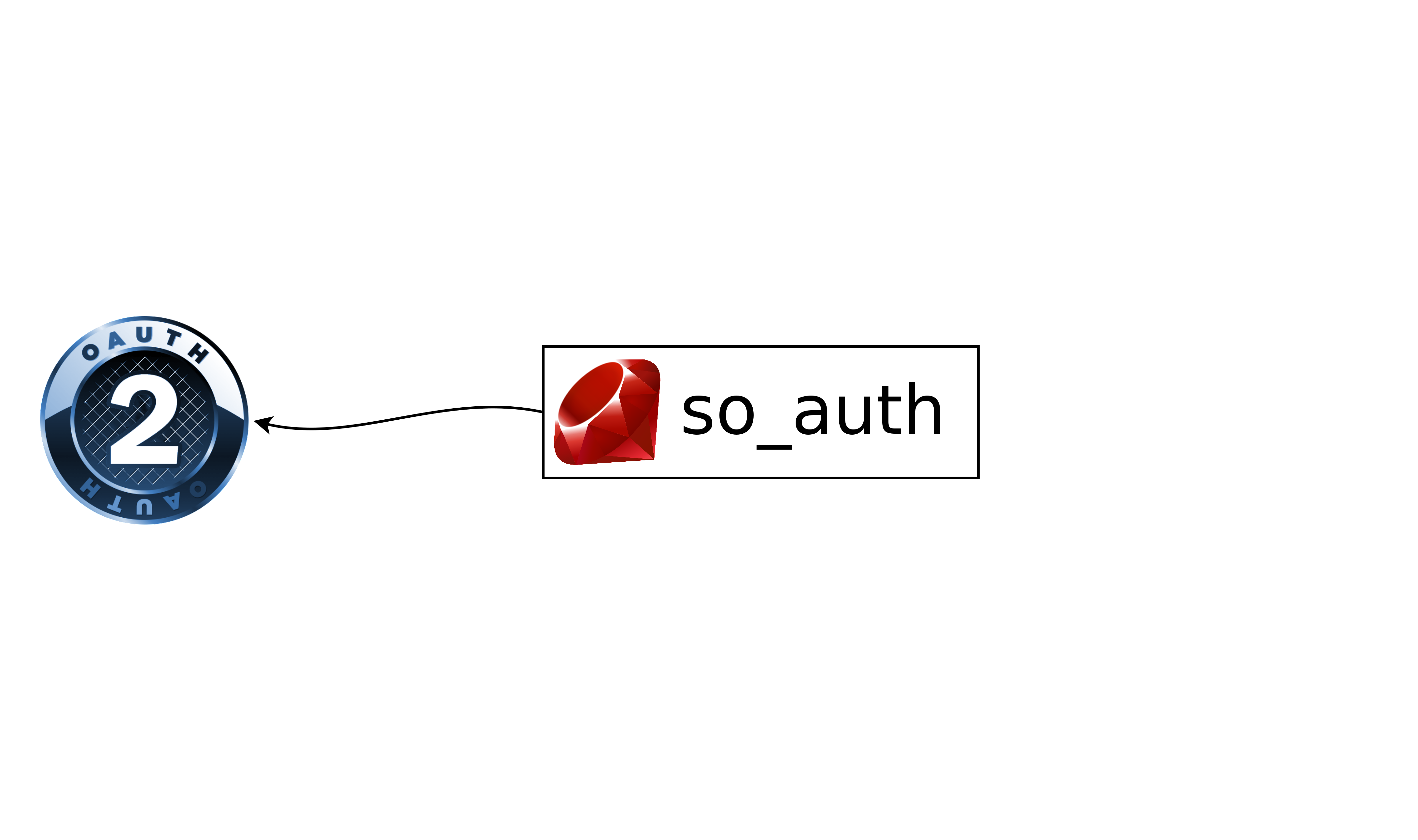
The plan
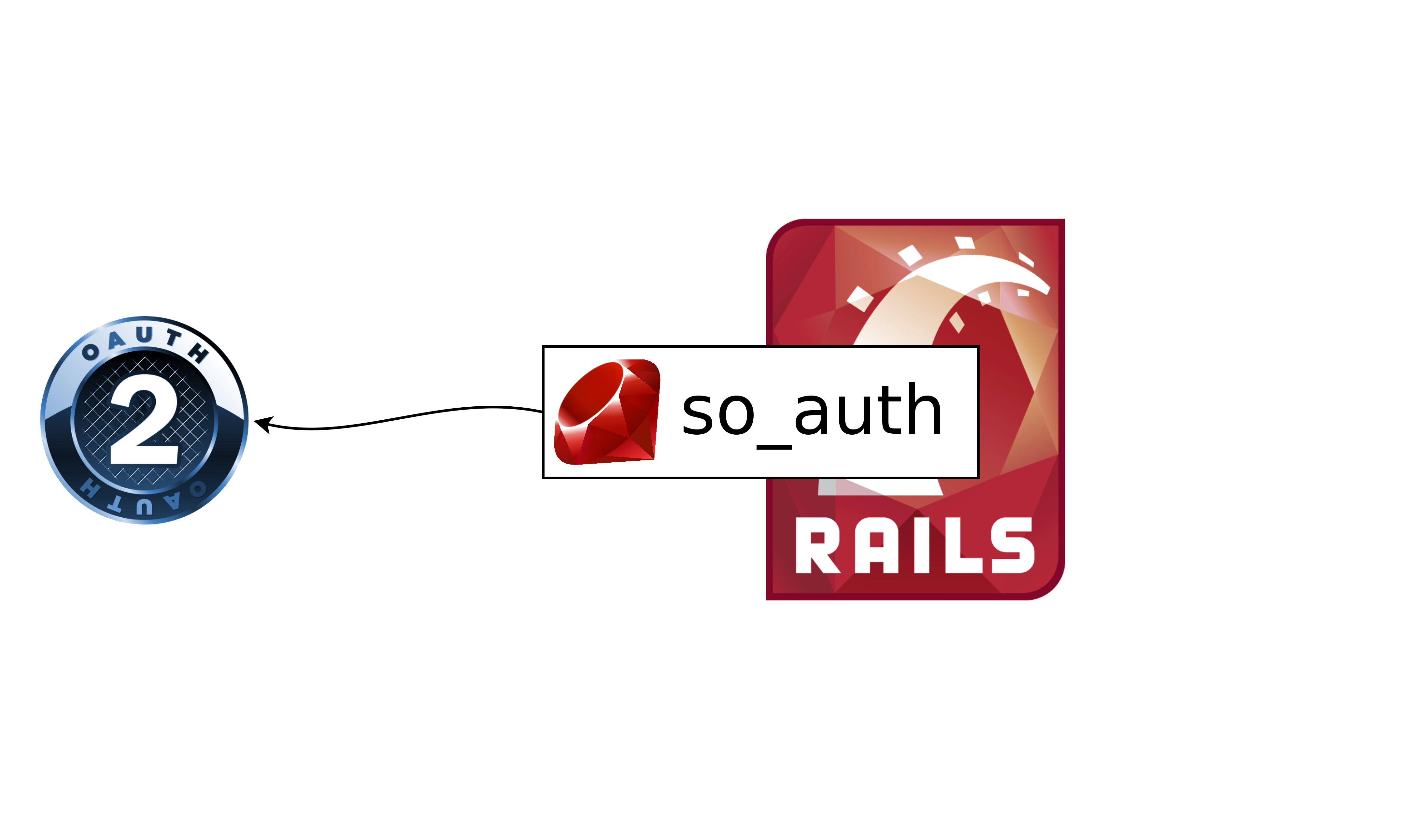
The plan
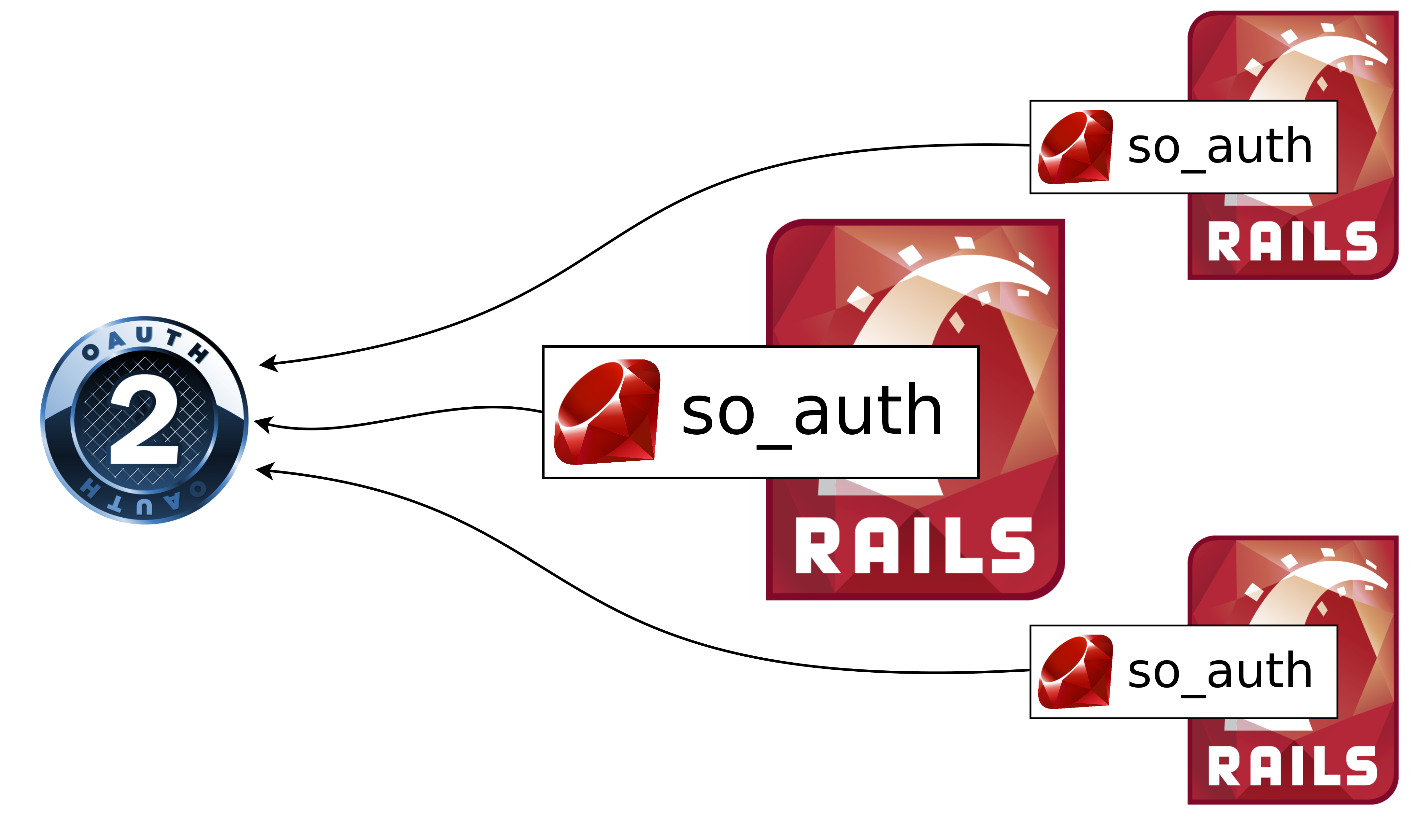
Demo
http://so-auth-client.octolabs.com/
The Real Plan
Step through the OAuth dance
building or integrating
the pieces that we need.
The first request/response
|

|

|
Consumer Implementation - Part 1
Consumer Implementation - Part 1
Entering the OAuth Dance
Consumer Implementation - Part 1
Create a rails engine called so_auth
$ rails plugin new so_auth \
--full \
-T \
--dummy-path=spec/dummy
Update so_auth.gemspec
Gem::Specification.new do |s|
#...
s.add_dependency 'omniauth', "~> 1.2.1"
s.add_dependency 'omniauth-oauth2', "~> 1.1.2"
#...
end
so_auth strategy for OAuth2
# lib/omniauth/strategies/so.rb
require 'omniauth-oauth2'
class OmniAuth::Strategies::So < OmniAuth::Strategies::OAuth2
option :name, 'so'
option :client_options, {
:site => ENV['AUTH_PROVIDER_URL'],
:authorize_path => '/oauth/authorize',
:access_token_path => '/oauth/token'
}
end
Register the strategy with omniauth
# spec/dummy/config/initializers/omniauth.rb
# If you need to pull the app_id and app_secret from a different spot
# this is the place to do it
APP_ID = ENV['AUTH_PROVIDER_APPLICATION_ID'] || "not_a_real_id"
APP_SECRET = ENV['AUTH_PROVIDER_SECRET'] || "not_a_real_secret"
Rails.application.config.middleware.use OmniAuth::Builder do
provider :so, APP_ID, APP_SECRET
end
(Create a generator for this)
Create some content in spec/dummy
spec/dummy $ rails g controller stuff private public
create app/controllers/stuff_controller.rb
route get "stuff/public"
route get "stuff/private"
invoke erb
create app/views/stuff
create app/views/stuff/private.html.erb
create app/views/stuff/public.html.erb
Protect some content
# spec/dummy/app/controllers/stuff_controller.rb
class StuffController < ApplicationController
before_filter :login_required, :only => [:private]
end
Update ApplicationController
# spec/dummy/app/controllers/application_controller.rb
class ApplicationController < SoAuth::ApplicationController
#...
end
so_auth ApplicationController
class SoAuth::ApplicationController < ActionController::Base
def login_required
not_authorized
end
def not_authorized
respond_to do |format|
format.html{
redirect_to "/auth/so?origin=#{request.original_url}"
}
format.json{ head :unauthorized }
end
end
end
The next request/response
|

|

|
Provider Implementation
Provider Implementation
Install and configure doorkeeper
# Gemfile
gem 'doorkeeper', '~> 1.1.0'
$ bundle install
$ rails generate doorkeeper:install
$ rails generate doorkeeper:migration
$ rake db:migrate
doorkeeper configuration
# config/initializers/doorkeeper.rb
Doorkeeper.configure do
# This should either return the current user
# or redirect to the sign in page.
resource_owner_authenticator do
current_user || warden.authenticate!(:scope => :user)
end
#...
end
OAuth application authorization
Get rid of it!
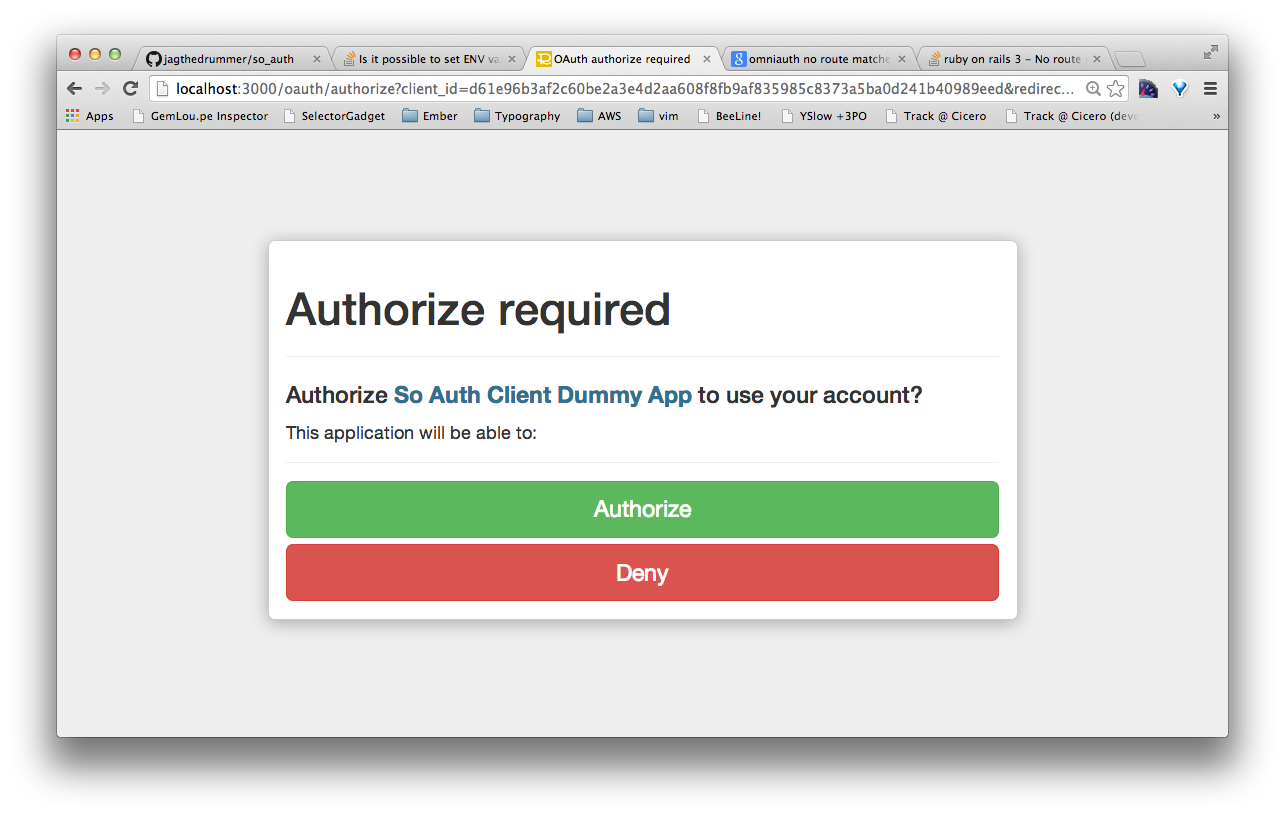
doorkeeper configuration
# config/initializers/doorkeeper.rb
Doorkeeper.configure do
# We want to skip the screen that asks
# "can application X use your profile?"
skip_authorization do |resource_owner, client|
true
end
#...
end
Hooray gems!
|

|

|
Browsers love redirects.
|

|
Hooray gems!
|

|

|
Hooray gems!
|

|

|
Pass user info to the consumer
# config/routes.rb
SoAuthProvider::Application.routes.draw do
#...
get "oauth/me" => "oauth/users#me"
#...
end
Pass user info to the consumer
# oauth/users_controller.rb
class Oauth::UsersController < ApplicationController
doorkeeper_for :all # sets doorkeeper_token or sends 401 error
respond_to :json
# GET /me.json
def me
respond_with current_resource_owner
end
private
# Find the user that owns the access token
def current_resource_owner
User.find(doorkeeper_token.resource_owner_id) if doorkeeper_token
end
end
Nearly done!
|

|

|
Consumer Implementation - Part 2
Consumer Implementation - Part 2
Exiting the OAuth Dance
so_auth strategy for OAuth2
# lib/omniauth/strategies/so.rb
class OmniAuth::Strategies::So < OmniAuth::Strategies::OAuth2
#...
def raw_user_info
@raw_user_info ||= access_token.get('/oauth/me').parsed
end
uid { raw_user_info['id'] }
end
so_auth strategy for OAuth2
# lib/omniauth/strategies/so.rb
class OmniAuth::Strategies::So < OmniAuth::Strategies::OAuth2
#...
info do
{
:email => raw_user_info['email'],
:admin => raw_user_info['admin']
}
end
extra do
{ :raw_user_info => raw_user_info }
end
end
so_auth routes
# config/routes.rb
Rails.application.routes.draw do
# ...
# omniauth callbacks
get '/auth/:provider/callback', :to => 'so_auth/user_sessions#create'
get '/auth/failure', :to => 'so_auth/user_sessions#failure'
end
so_auth UserSessionsController
class SoAuth::UserSessionsController < SoAuth::ApplicationController
# omniauth callback method
def create
omniauth = env['omniauth.auth']
user = User.find_or_create_by(:id => omniauth['uid'])
if user.respond_to?(:email)
user.email = omniauth['info']['email']
end
user.save
session[:user_id] = user.id
redirect_to request.env['omniauth.origin'] || root_path
end
#...
end
so_auth UserSessionsController
class SoAuth::UserSessionsController < SoAuth::ApplicationController
#...
# Omniauth failure callback
def failure
flash[:notice] = params[:message]
redirect_to root_path
end
end
so_auth ApplicationController
class SoAuth::ApplicationController < ActionController::Base
#...
def current_user
return nil unless session[:user_id]
@current_user ||= User.find_by_id(session[:user_id])
end
def signed_in?
current_user.present?
end
helper_method :signed_in?
helper_method :current_user
end
so_auth ApplicationController
class SoAuth::ApplicationController < ActionController::Base
def login_required
not_authorized unless current_user
end
#...
end
Hooray gems! And so_auth!
|

|
Single sign off
Single sign off (Provider side)
class Oauth::SessionsController < Devise::SessionsController
def set_user_cookie(user)
cookies[:so_auth] = { :value => user.id,
:domain => env_domain }
end
def remove_user_cookie
cookies.delete(:so_auth, :domain => env_domain)
end
def env_domain
domain = ENV['COOKIE_DOMAIN'] || "localhost"
domain == "localhost" ? :all : domain
end
#...
end
Single sign off (Provider side)
# config/routes.rb
SoAuthProvider::Application.routes.draw do
#...
devise_for :users,
:controllers => {:sessions => "oauth/sessions"}
#...
end
Single sign off (Provider side)
class Oauth::SessionsController < Devise::SessionsController
def create
super {|resource| set_user_cookie(resource) }
end
def destroy
super {|resource| remove_user_cookie }
end
#...
end
Single Sign Off (Consumer side)
class SoAuth::ApplicationController < ActionController::Base
before_filter :check_cookie
def check_cookie
reset_session unless cookie_valid?
end
def cookie_valid?
cookies[:so_auth].present? &&
session[:user_id].present? &&
cookies[:so_auth].to_s == session[:user_id].to_s
end
#...
end
Single Sign Off (Consumer side)
# config/routes.rb
Rails.application.routes.draw do
# Custom logout
post '/logout', :to => 'so_auth/user_sessions#destroy'
end
Single Sign Off (Consumer side)
class SoAuth::UserSessionsController < SoAuth::ApplicationController
#...
# logout - Clear our rack session BUT importantly redirect
# to the provider to clean up the there too!
def destroy
reset_session
redirect_to "#{ENV['AUTH_PROVIDER_URL']}/users/sign_out"
end
end
so_auth usage
so_auth usage
$ rails new so_auth_consumer -T --database=postgresql
# Gemfile
# development
gem 'so_auth', path: "../so_auth"
# for deployment
gem 'vendorise', group: :development
# rake "vendorise:gem[git@github.com:jagthedrummer/so_auth.git]"
gem 'so_auth', path: "vendor/gems/so_auth"
$ rails generate so_auth:install
create config/initializers/omniauth.rb
# If you need to pull the app_id and app_secret from a different spot
# this is the place to do it
APP_ID = ENV['AUTH_PROVIDER_APPLICATION_ID'] || "not_a_real_id"
APP_SECRET = ENV['AUTH_PROVIDER_SECRET'] || "not_a_real_secret"
Rails.application.config.middleware.use OmniAuth::Builder do
provider :so, APP_ID, APP_SECRET
end
Register your new consumer with so_auth_provider
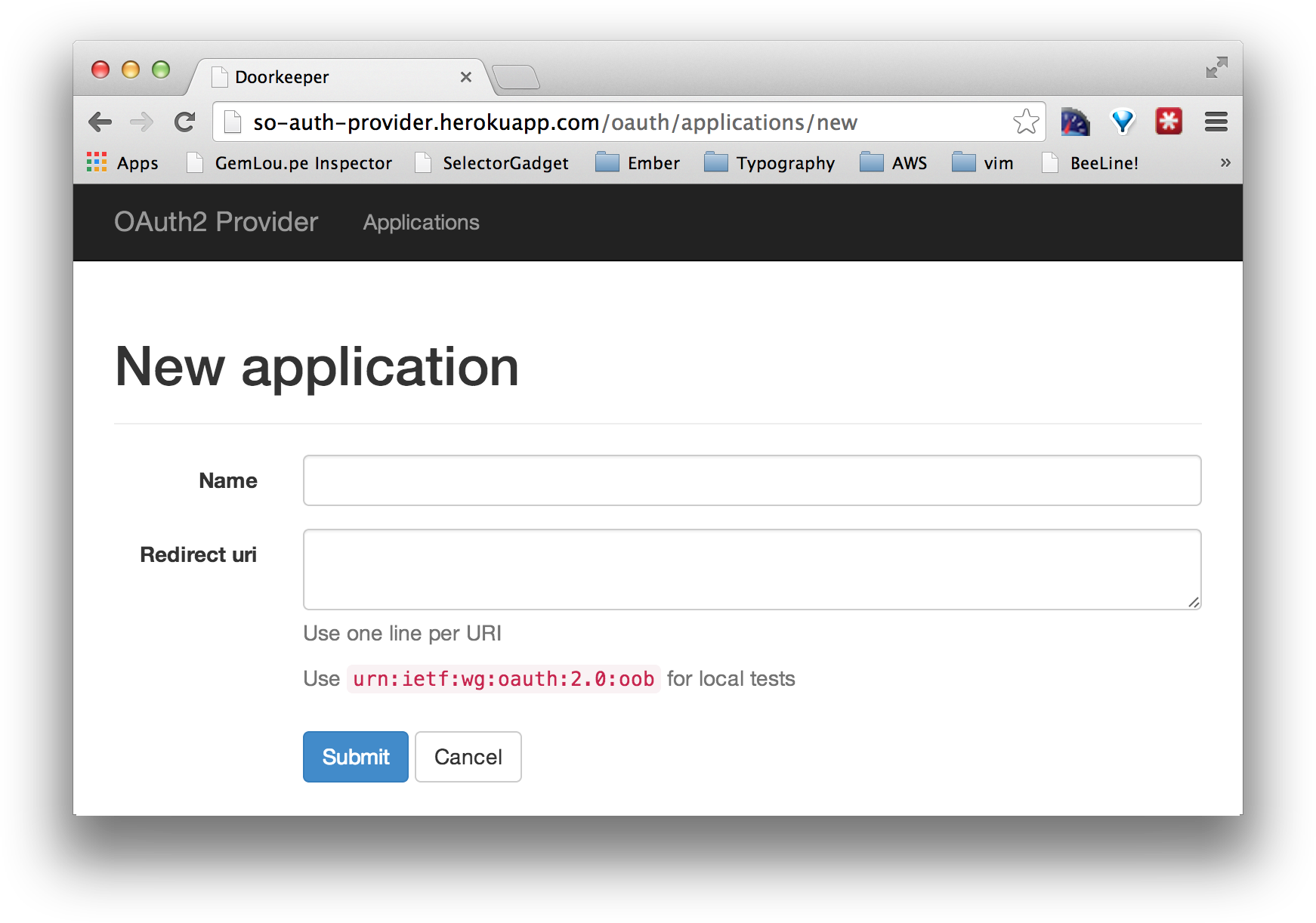
Take note of your
Application Id and Secret
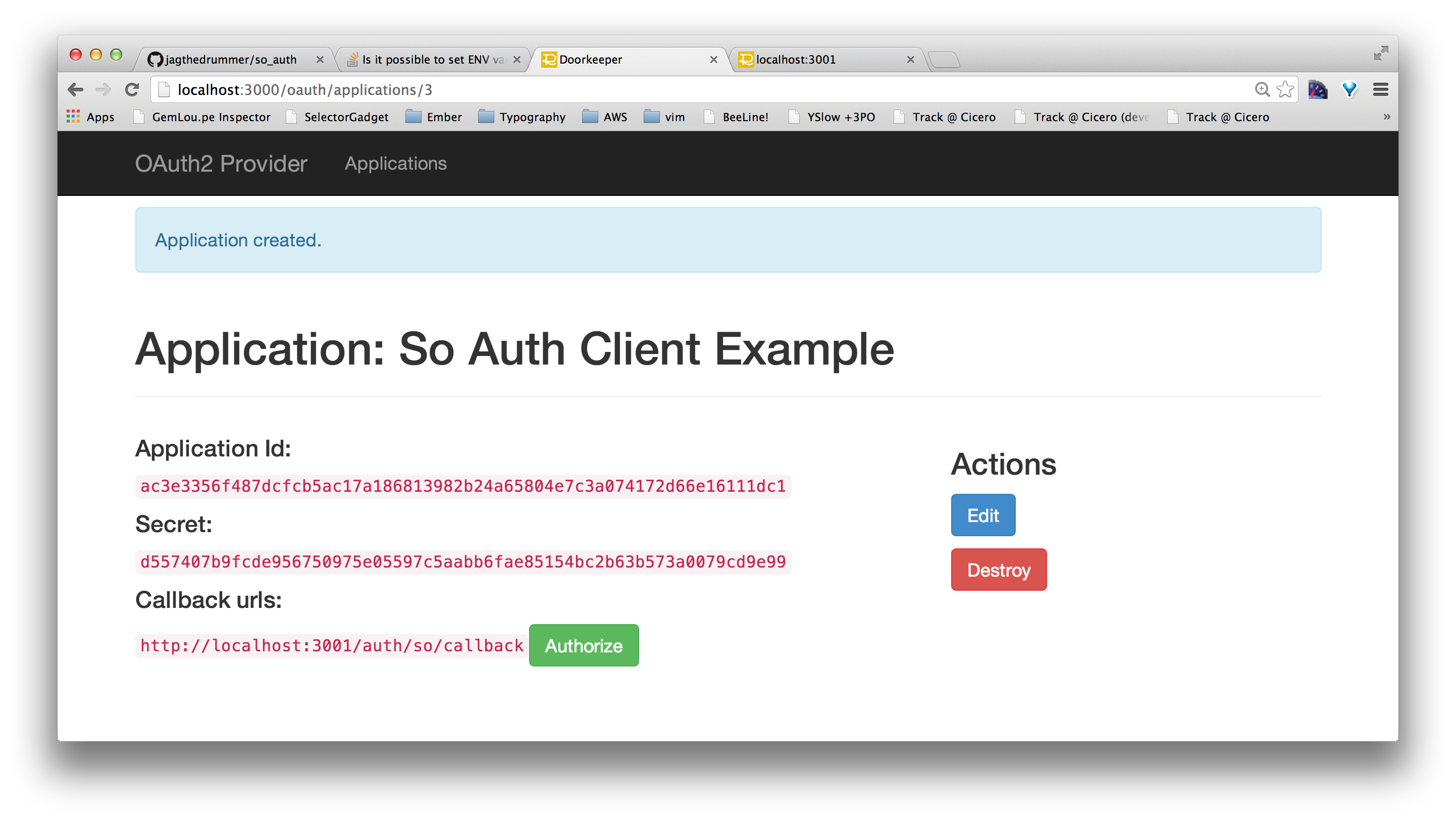
Set up some environment variables
AUTH_PROVIDER_URL=http://localhost:3000
AUTH_PROVIDER_APPLICATION_ID=1234
AUTH_PROVIDER_SECRET=5678
Create a User model
$ rails generate model user email:string
$ rake db:migrate; rake db:test:prepare
Protect some content
# app/controllers/some_controller.rb
class SomeController < ApplicationController
before_filter :login_required, :only => [:private_stuff]
end
Wrap Up
Start where you are

Add an OAuth provider

Add one service

Thanks For Watching!
|
@jagthedrummer jeremy@octolabs.com |

|
SOAuth & Login with _____
